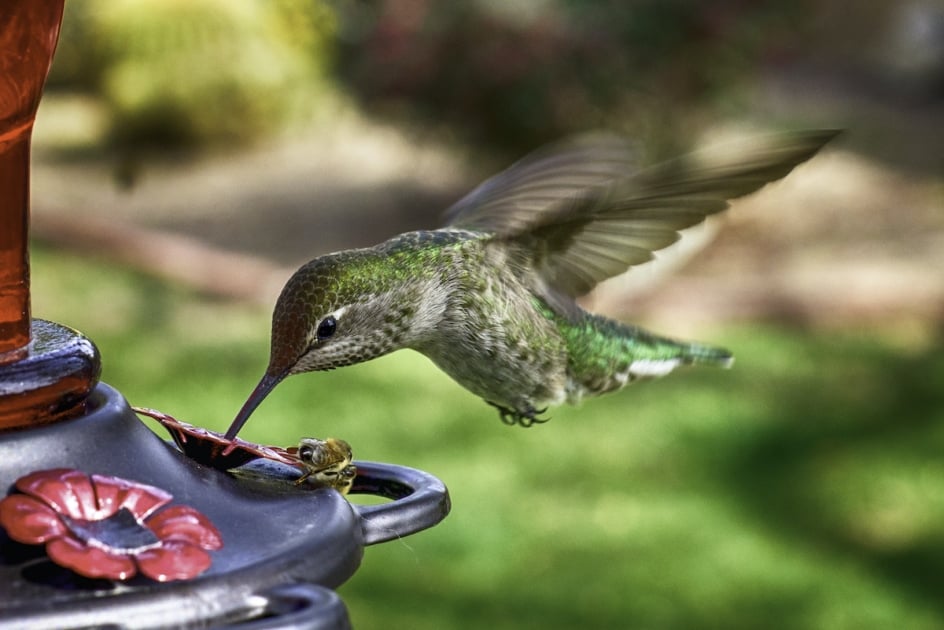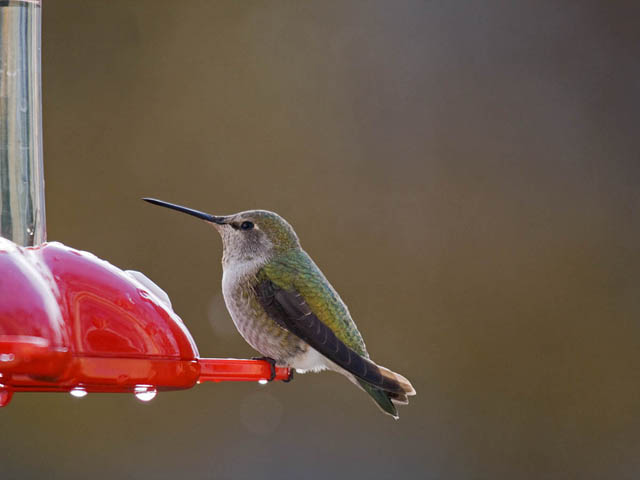“When to Put Up and Take Down Hummingbird Feeders” is an informative article that offers valuable insights into the proper timing for putting up and taking down hummingbird feeders. With a friendly tone, it discusses the feeding habits of these tiny birds and even provides a recipe for hummingbird nectar. The article highlights the importance of considering the migrating patterns and weather conditions when determining the right time to hang the feeders. For early migrants, the recommendation is to have the feeders ready in spring to provide them with much-needed energy. As the article advises, it is best to keep the feeders up until there are no more hummingbirds present. In regions where hummingbirds stay during winter, maintaining the feeders year-round is highly recommended. To aid readers in finding precise information, the article features a helpful chart indicating the timing of hummingbird season in each state across the United States.

Hummingbird Feeding Habits
Hummingbirds are fascinating creatures known for their vibrant colors, rapid wing movement, and their ability to hover in mid-air. But have you ever wondered how they get their energy to perform these incredible feats? As it turns out, hummingbird feeding habits are quite unique and crucial to their survival.
Feeding Habits of Hummingbirds
Hummingbirds have a high metabolism and require a substantial amount of food to sustain their fast-paced lifestyle. Their primary source of nourishment comes from flower nectar, which is rich in sugars necessary for energy production. These tiny birds have a long, needle-like beak that allows them to reach deep into flowers and extract nectar.
In addition to nectar, hummingbirds also consume insects and spiders. These small creatures provide a crucial source of protein and nutrients that cannot be obtained solely from nectar. By hunting for insects and spiders, hummingbirds supplement their diet and ensure they have a well-rounded meal.
To facilitate their feeding habits, hummingbirds have evolved a unique tongue structure. Their tongues are split and have tiny grooves on the sides, allowing them to lap up nectar from flowers. This specialized adaptation enables them to quickly feed on nectar and maximize their energy intake.
Hummingbird Nectar Recipe
If you want to attract hummingbirds to your backyard or garden, you can make your own hummingbird nectar using a simple recipe. All you need is water and sugar. Mix four parts water with one part sugar and bring it to a boil. Let it cool down before filling your hummingbird feeder. It’s important to note that you should never use honey or artificial sweeteners, as they can be harmful to hummingbirds. Stick to plain white granulated sugar for the best results.
Hummingbird Migration
Hummingbirds are not just fascinating for their feeding habits; they also undertake impressive migratory journeys. These small birds embark on long-distance flights to find suitable breeding grounds and food sources. The timing of hummingbird migration varies depending on their location and prevailing weather conditions.
Migration Timing and Factors
Hummingbird migration typically begins in the spring when the days start getting longer and flowers begin to bloom. As the availability of nectar and insects increases, hummingbirds start their journey north from their wintering grounds in the south. The exact timing of migration can vary depending on the species and geographic location.
Several factors influence the timing of hummingbird migration, including day length, temperature, and food availability. Hummingbirds rely on these environmental cues to determine when it is time to start their journey. While specific triggers can vary across different species, the overall goal remains the same: find suitable breeding grounds and abundant food sources.
Putting Up Feeders in Spring
To support early migrants and provide them with a much-needed energy boost, it is recommended to put up hummingbird feeders in the spring. By offering a readily available source of nectar, you can help these tiny birds replenish their energy reserves after their long journey. Make sure to clean the feeders regularly and replace the nectar every few days to maintain its freshness.
Keeping Feeders Up until Migration Ends
Hummingbird migration can be a prolonged process, with birds making frequent stops along the way. To ensure that migrating hummingbirds have access to nourishment throughout their journey, it is essential to keep feeders up until migration ends in your area. This way, you can provide a reliable food source for late migrants or individuals passing through on their way to their final destination.
Year-Round Feeders in Winter Regions
In regions where hummingbirds remain during the winter months, it is suggested to keep feeders up year-round. These wintering hummingbirds heavily rely on the consistent availability of food to survive the colder months. By providing a reliable source of nectar, you can help these remarkable birds endure the challenges brought by winter and increase their chances of survival.

Hummingbird Season by State
Hummingbird season varies across the United States, with different states experiencing migration at different times. To help you understand when to expect hummingbirds in your area, we have compiled a chart indicating the timing of hummingbird season in each state.
| State | Hummingbird Season |
|---|---|
| Alabama | March to October |
| Alaska | May to September |
| Arizona | March to October |
| Arkansas | March to November |
| California | Year-round in southern regions; migratory in northern regions |
| Colorado | April to October |
| Connecticut | April to October |
| Delaware | April to November |
| Florida | Year-round in southern regions; migratory in northern regions |
| Georgia | March to November |
| Hawaii | Year-round |
| Idaho | May to September |
| Illinois | April to October |
| Indiana | April to September |
| Iowa | April to October |
| Kansas | April to October |
| Kentucky | April to September |
| Louisiana | March to November |
| Maine | May to September |
| Maryland | April to November |
| Massachusetts | April to October |
| Michigan | April to September |
| Minnesota | April to September |
| Mississippi | March to October |
| Missouri | March to October |
| Montana | May to September |
| Nebraska | April to October |
| Nevada | April to October |
| New Hampshire | May to September |
| New Jersey | April to October |
| New Mexico | March to October |
| New York | April to October |
| North Carolina | March to October |
| North Dakota | May to September |
| Ohio | April to September |
| Oklahoma | March to October |
| Oregon | April to September |
| Pennsylvania | April to October |
| Rhode Island | April to October |
| South Carolina | March to November |
| South Dakota | April to September |
| Tennessee | March to October |
| Texas | Year-round in southern regions; migratory in northern regions |
| Utah | May to September |
| Vermont | May to September |
| Virginia | March to November |
| Washington | April to September |
| West Virginia | April to October |
| Wisconsin | April to September |
| Wyoming | April to September |
By referring to this chart, you can have a better understanding of when hummingbirds are likely to be present in your state. Remember to prepare your feeders and keep an eye out for these delightful, tiny creatures during their respective seasons.
In conclusion, understanding hummingbird feeding habits and migration patterns can help you appreciate these incredible birds even more. By providing them with a reliable source of nectar and understanding their seasonal movements, you can play a small but significant role in supporting and conserving these remarkable creatures. Enjoy the beauty and grace of hummingbirds in your own backyard or garden, and marvel at their extraordinary feeding habits and migratory journeys.

Leave a Reply